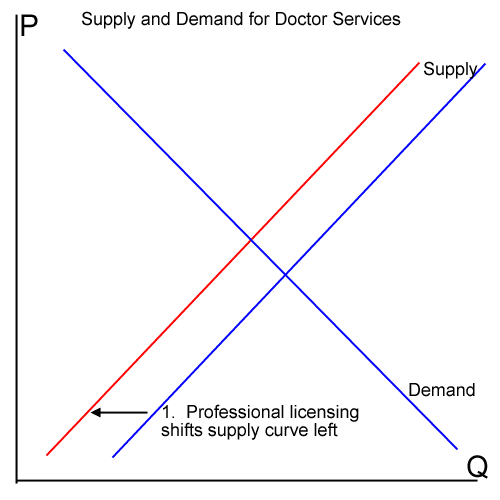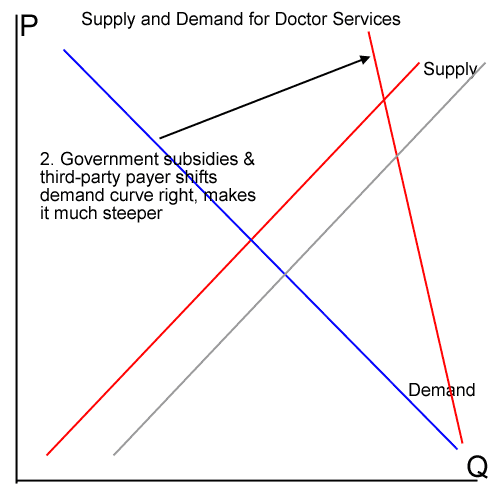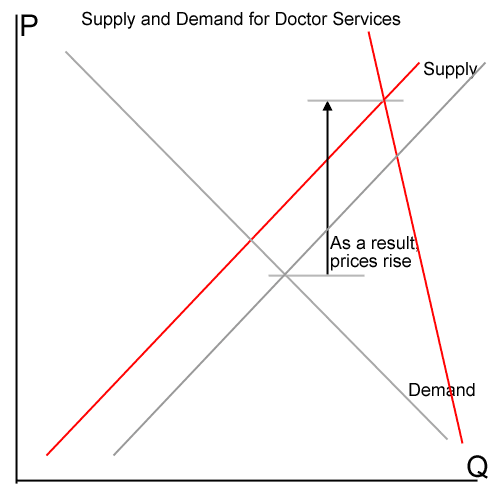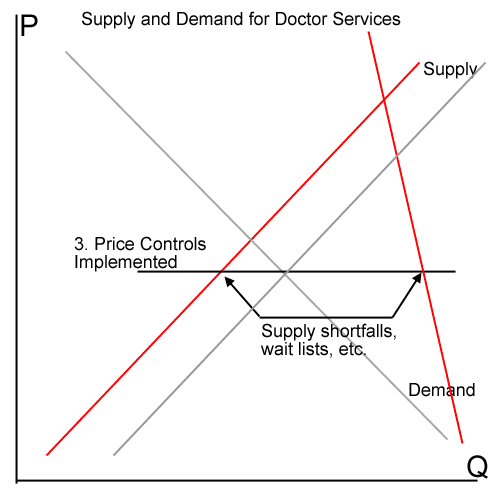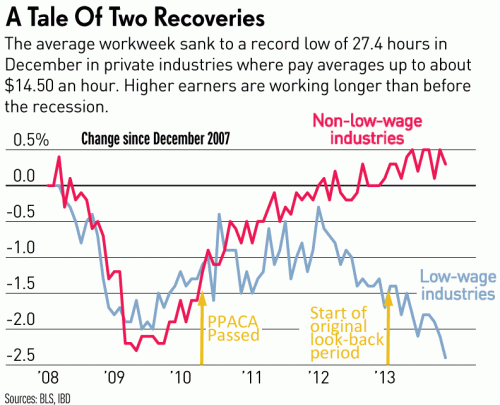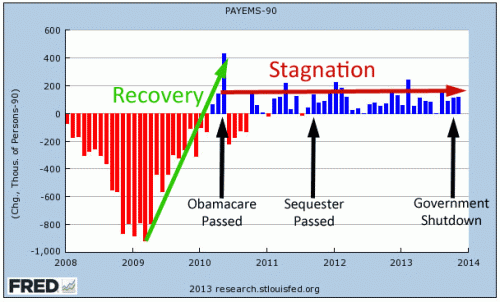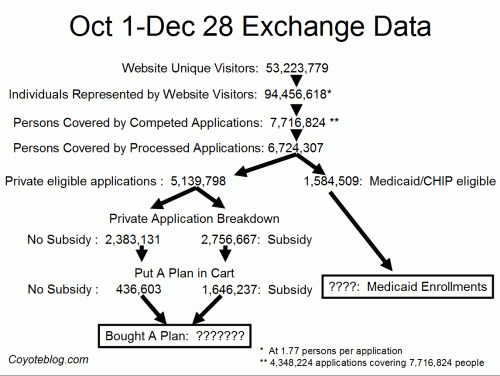RAND has a study out on changes in people's sources for health insurance. Once you get the hang of reading it, this is a great table:
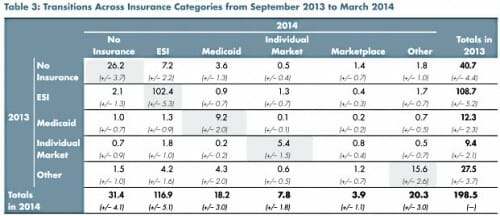
This is how to read it -- of the 40.7 million uninsured in September of 2013, 26.2 million remained uninsured, 7.2 million got new employer health insurance (ESI) , 3.6 million joined medicaid, etc. But then some new uninsured were added back so the new total uninsured is 31.4 million.
One of the first things to notice is the marketplace number of 3.9 million is well below the Administration's claim of 7.1 million. The Administration's number is not even within the error bar here, so one needs to be skeptical, if he was not already, of Administration sign-up figures.
We also can notice that the individual marketplace seemed to have shrunk from 9.4 million to 7.8 million. No huge surprise, with all the cancellations that made the news last year.
The really interesting question, of course, is what happened to the uninsured. We can use this table to look at net changes (millions of people).
| 2013 Uninsured |
40.7 |
| To Employer |
-5.1 |
| To Medicaid |
-2.6 |
| To Individual |
+0.2 |
| To Exchange |
-1.4 |
| To Other |
-0.3 |
| 2014 Uninsured |
31.4 |
To make sure everyone understands the math, 7.2 million left the ranks of the uninsured to get an employer policy, but 2.1 million previously insured by employers became uninsured. The net is -5.1 million as shown. All the other numbers are calculated the same way.
I have always had serious questions about the value of the Medicaid signups during this period. Medicaid is not a limited enrollment product. You can sign up bleeding on a gurney being rolled into the operating room, and in fact many do -- Hospitals are very good at enrolling people into Medicare as they walk in. So it was really a misnomer in the first place that someone eligible for Medicaid is "uninsured" -- they are in fact insured, they just have not done the paperwork. The Medicaid expansion in the PPACA probably helped, but many states that did not expand Medicaid had a lot of signups as well.
The exchange seems to have done little to affect the uninsured. Net of the reductions in individual insurance presumably driven also by the PPACA, the exchanges reduced the uninsured by 1.2 million.
The really interesting number everyone is looking at is the huge number of the insured that gained employer coverage. Three quarters of the non-Medicare related reduction in uninsured (since I don't consider a lot of the Medicare signups a real reduction) were from people going onto employer plans.
Kevin Drum quotes Andrea Mcintyre as saying
If it’s correct, it was probably motivated multiple factors—I hate the word “synergy” on principle, but it comes to mind. The economy has been improving, so some of the previously unemployed have secured jobs with benefits. But CBO built in expectations about economic recovery, so I don’t think it’s quite right to try pinning all (or even most?) of the 8.2 million on that. The individual mandate, while weak in its first year, might be a stronger stick than we expected, nudging people to take their health benefits where they’d previously been opting out. Employers could be helping this move this trend along; the University of Michigan, for example, eliminated “opt out dollars” in 2014 (cash compensation for employees who declined coverage).
Drum add triumphantly
If this finding is confirmed, it's a genuine shocker. Although CBO projected that ESI would stay steady, there's been a lot of chatter about the likelihood of employers dropping coverage thanks to Obamacare. But that sure doesn't seem to have happened. So in addition to the usual sources of coverage—Medicaid, exchanges, sub-26ers—it looks like Obamacare has yet another big success story to tell, one that was almost completely unexpected.
Uh, maybe. The employer insurance changes could also be an artifact of normal churn and of the odd study period. The study period is only about half a year. If there were annual patterns, ie with people losing employer health care early in the year and then gaining it at the end of the year, then only the gains would show up in the study and not the losses. In fact, there is some reason to believe this is the case, as most corporations have open enrollment periods at the end of the calendar year.
But there is a more interesting issue here. Folks arguing for Obamacare in the first place sold it by implying that most all the uninsured were uninsured because they could not afford coverage or did not have access. Now it turns out a large block of the uninsured actually did have access and could afford it, they just chose not to buy it, for whatever reason. Was this really what it was all about from the very beginning, forcing people to buy a product that they could afford but did not want?

